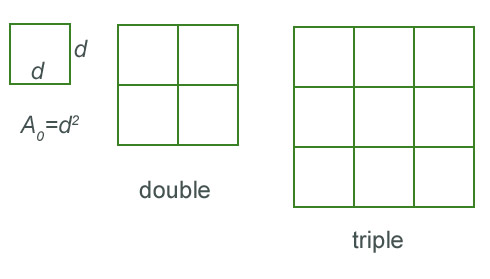
Here's how you did collectively on the "portable restrooms" estimation.
Sometimes you can quickly use equations to make estimates of changes without knowledge of all the numbers in the equation, when you think this way...
...when you double, or triple the size (scale) of a figure?

Doubling: `A=(2d)(2d)=4d^2 = 4 cdot A_0`
Tripling: `A=(3d)(3d)=9d^2=9cdot A_0`
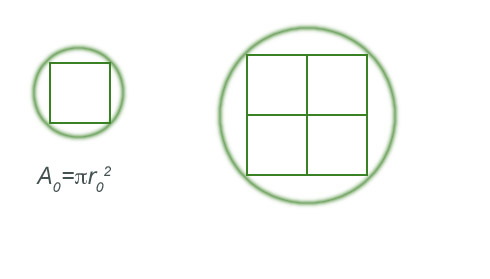
Doubling a circle: `A=pi(r)^2=pi(2r_0)^2=4pi(r_0)^2`
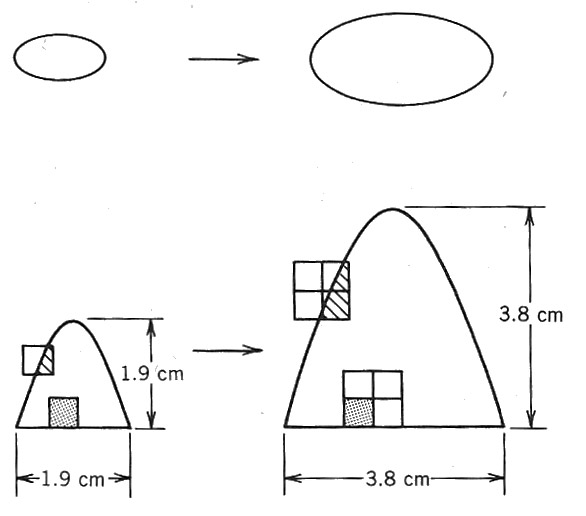
should quadruple its area...
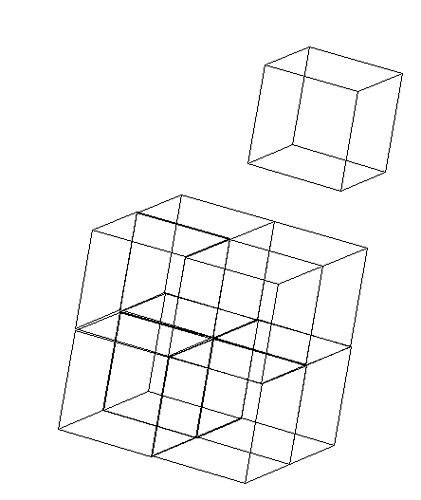 doubling
some 3-dimensional object will do what to its volume?
doubling
some 3-dimensional object will do what to its volume?
`V = 8 * V_0 = 2*2*2 *V_0`
An elephant is half the height of her mother who has a volume of 16 cubic meters. What's the volume of the baby?
2 cubic meters.

If you doubled your mass, what would happen to your weight? It would double of course! But can we see how this follows from Newton's law of gravity?
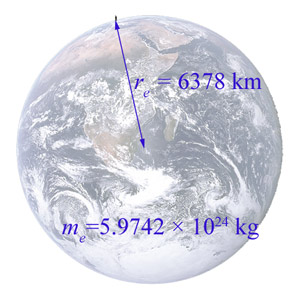 Let's
say that your mass is 80 kg (That's a weight of `approx` 180 lbs). This means
your weight on the surface of Earth is `approx 80 kg times 9.8 m/s^2 = 784
N`. Or we could also calculate your weight from the universal law of gravitation:
Let's
say that your mass is 80 kg (That's a weight of `approx` 180 lbs). This means
your weight on the surface of Earth is `approx 80 kg times 9.8 m/s^2 = 784
N`. Or we could also calculate your weight from the universal law of gravitation:
`f_(g) =6.7 times 10^(-11)frac(m_1 times m_2)(d^2)`.
`m_1` is your mass: `80 kg`
`m_2` is the mass of the earth: `5.97 times 10^(24) kg`
`d` is the distance between centers of mass: `6378 km`
`f_(g) = 6.7 times 10^(-11) frac(80 times 5.97 times 10^24)((6.378times10^6)^2)=790N`
To figure what the force is, if we double your mass, we *could* run through the calculation again like this...
`f_(g) = 6.7 times 10^(-11) frac(2*80 times 5.97 times 10^24)((6.378times10^6)^2)=1580N`
*or* we could instead pull that factor of 2 out in front...
`f_(g) = 2 times 6.7 times 10^(-11) frac(80 times 5.97 times 10^24)((6.378times10^6)^2)`
..and think of this as
`f_(g) = 2 times `[A formula with all the numbers in it that we already calculated to be 790 N]
What would the weight of that 80 kg person be on a planet with the same mass as Earth, but a radius that was half of Earth's radius? What about 1/5 times Earth's radius?
`f_(g) = 6.7 times 10^(-11) frac(80 times 5.97 times 10^24)((bb(frac(1)(2))
times 6.378times10^6)^2) =6.7 times 10^(-11) frac(80 times 5.97 times 10^24)(((bb(frac(1)(2)))^2
(6.378times10^6)^2))=`
`6.7 times 10^(-11) frac(80 times 5.97 times 10^24)(bb(frac(1)(4))(6.378times10^6)^2)
= bb(4) times 6.7 times 10^(-11) frac(80 times 5.97 times 10^24)((6.378times10^6)^2)
= bb(4) times 790 N`
A person who weighs 790 N at the surface of the earth weighs how much on the top of Mt. Everest (29,035 ft / 8850 m)?
The distance between the centers of mass will be 6378+8.9 km `approx` 6387 km, compared to the normal distance of 6378 at sea level. This new distance, divided by the normal distance is `6387/6378=1.0014`.
Everything else in the equation for `f_g`